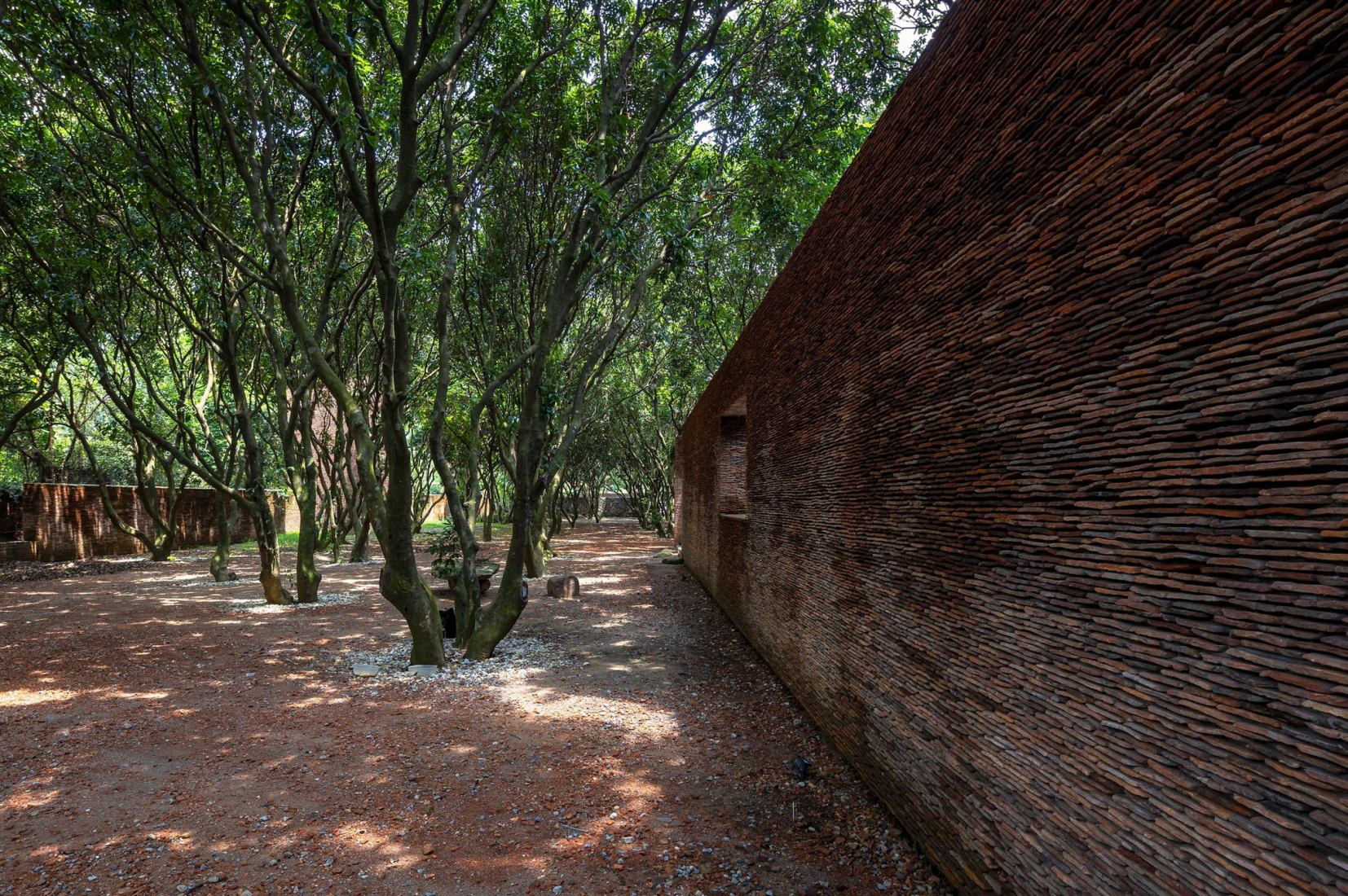The museum is the result of an intelligent abstraction and integration between the existing and the construction of new functional volumes used for accommodation, galleries, and a kitchen organized around the old home, which now serves as an exhibition area for pieces linked to the Đạo Mẫu.
The project's objective was to reduce as much as possible the need to relocate existing trees. With the project, the view from the street of the old orchard seems to be framed and carefully hidden behind the door, creating a harmonious dialogue between the abstraction of the new architecture and the existing environment.

Đạo Mẫu Museum by ARB Architects. Photograph by Trieu Chien.


Đạo Mẫu Museum by ARB Architects. Photograph by Trieu Chien.
Project description by ARB Architects
Through this project, as a Vietnamese folk artist, the investor wishes to preserve the enduring values of Đạo Mẫu, which is an inherent belief of the Vietnamese people throughout generations and has remained resilient to this day. The project is nestled within the enchanting embrace of a quaint village near the capital city of Hanoi. Spanning across an expansive area of approximately 5,000 square meters, the site is filled with a 50-year-old orchard including various fruit trees, pine trees, and bonsai trees. Currently, there is a humble house on the site where the owner used to seek solace for weekend getaways.
Both the team of architects and the homeowner unanimously agreed to preserve everything that is currently “presence on the ground”, including all the trees rooted in the garden, the old house, the fence, and the gate pillars. However, elements that were “not touching the ground,” such as the gate wings, were replaced, and the bonsai trees planted in pots were sold to bonsai enthusiasts. Additionally, the mezzanine of the old house was dismantled to transform the space into a larger area dedicated to exhibiting paintings depicting Đạo Mẫu.
New functional blocks, comprising accommodation areas, a gallery, and a kitchen, are thoughtfully arranged around the old house, which has been transformed into a display area for artifacts related to Đạo Mẫu. The aim is to minimize the need to relocate the existing trees. From the neighboring street, the ancient orchard seems to be framed and carefully concealed behind the gate, creating an architecture that is both separate and harmonious with the local surroundings.

Đạo Mẫu Museum by ARB Architects. Photograph by Trieu Chien.
The dominant material used in this project is traditional clay tiles, which the homeowner had collected from hundreds of old and historic houses in the nearby areas. The ongoing urbanization has significantly impacted the rural villages, resulting in a new appearance of village architecture. Many families no longer wish to maintain the traditional tiled roof structures of the past. Instead, they opt for more modern and durable constructions. This very phenomenon has influenced the desire to preserve the old form through contemporary architecture by the design team and project investor.
"The idea of using old tiles comes from my memories every time I watch a votive dance ceremony. I remember the sacred feeling through the smoke of incense, through the afternoon light that penetrates deeply into the interiors of the tiled roofs of the temples. Standing from a distance, I can fully admire the architectural lines formed by the low-pitched roofs, resembling a gracefully hanging curtain where the sounds of musical instruments, dance movements, the garments of mediums, and the gestures of offering converge harmoniously within a frame."
Nguyễn Hà / ARB Architects.
Through the Đạo Mẫu museum, the clay tiles from hundreds of old houses are preserved and transformed into a new life instead of being discarded. The material continues to embark on a new journey, a journey that cohesively preserves the inherent beliefs of the nation.













































